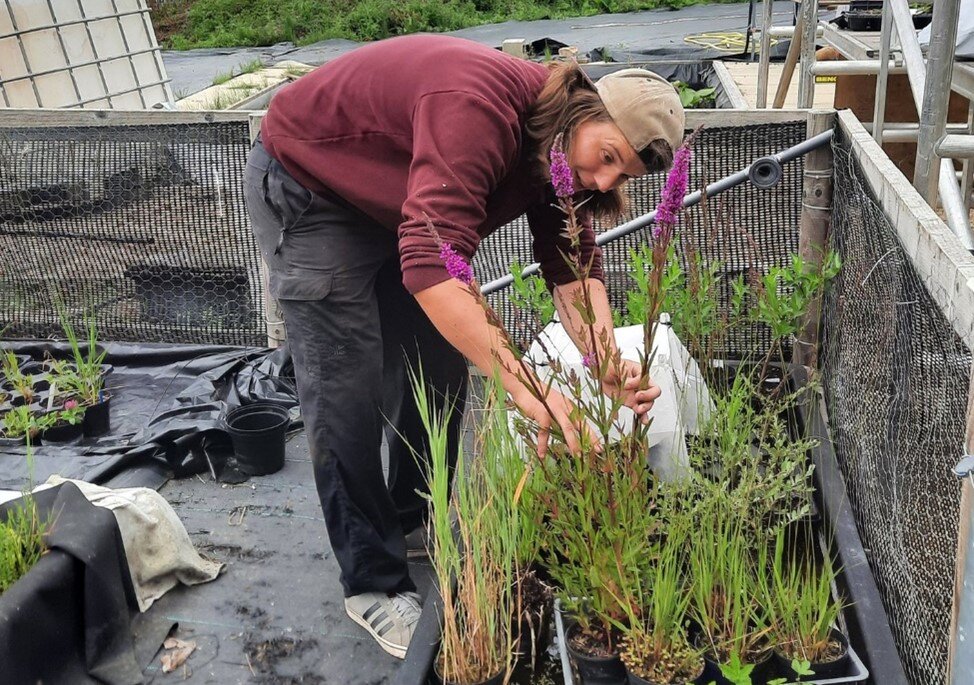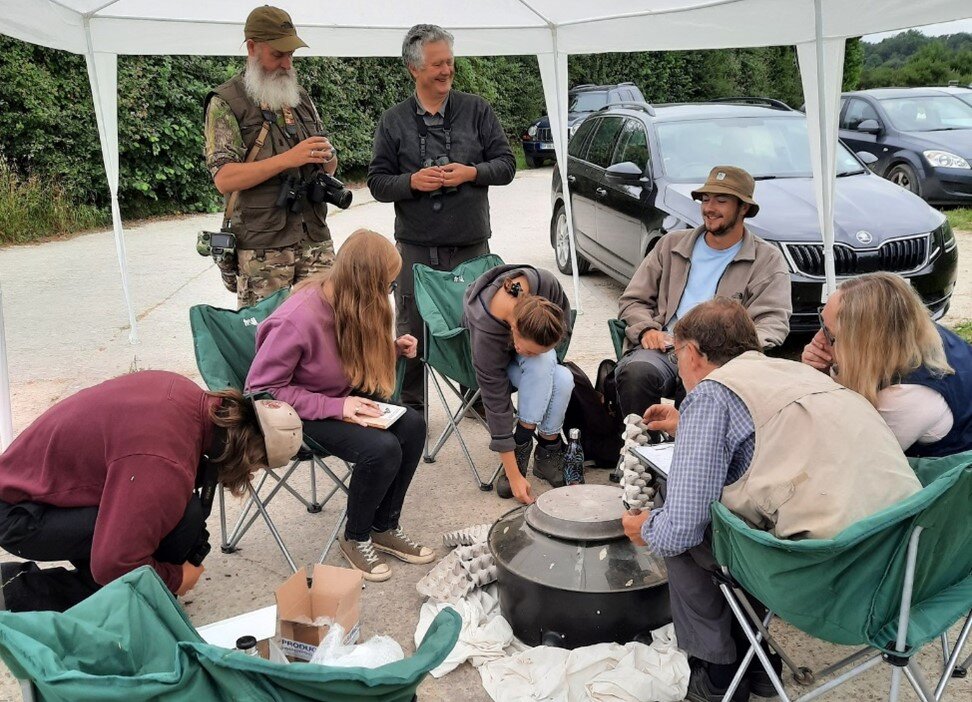LUCT intern blog
Daniel & Gabriel have been brought on board until the end of October as part of the LUCT’s Swale & Ure Washlands restoration project, funded by the Green Recovery Challenge Fund.
Daniel Silk:
Ever since I was a young boy, I have had a fascination with the natural world and it has always been my dream to work in the conservation sector. From humble beginnings watching Attenborough documentaries with my mother and father, to eventually graduating from university with an MSC in Endangered Species Recovery in 2019.
I have been lucky enough to travel all over the world, working with ecologists and conservationists. These experiences have ranged from surveying and tracking wolves across the mountains of Poland, to running population viability analysis to help save Portugal’s population of Egyptian vultures in the Durno valley, to spending a week in Jersey at the Durrell Institute, learning from the leading minds in captive breeding and species recovery.
Planting as part of the community workday
Although I am amazed and concerned in equal measure by the vast spectrum of wildlife across the world, I have always believed that UK wildlife is just as vibrant, amazing and important as the jungles of South America or the savannahs of Africa. Britain’s natural habitat is ever decreasing with the need for new housing and the years of damage done by intensive farming.
This is why I’m so excited to be working at with the Lower Ure Conservation Trust, working as part of a dedicated team, restoring vital natural habitat and providing a way for local people to connect with nature.
In my first couple of months at Nosterfield Nature Reserve, I have already gained a great deal of experience. My knowledge of fen and wetland plants has grown greatly, mostly down to the dutiful teaching of experienced volunteers Pan and Laurie, but also from physically planting the wetland plants that have been propagated in the plant nursery. Species like tufted sedge (Carex elata), bottle sedge (Carex rostrata) and bladder sedge (Carex vesicaria) are ideal for the shallow edges of the lakes around the old quarry. This knowledge has furthered my understanding of the Green Recovery Challenge Fund (GRCF) project goals and allowed me to pass on this knowledge to volunteers, especially during the July community workday in which we trialled a new sandbag planting technique for deeper water species.
Examining moths at the LUCT’s first moth morning
Before joining the Trust, my knowledge of butterflies and moths was good but with some large gaps missing. So when the chance arose to help with butterfly transects at the quarry, I thought it would be a great way to test what I already knew and also learn more. After taking part in two surveys, I have seen my ability to identify species with similar attributes vastly improve. I have also been lucky enough to see species I’d not seen before, such as white letter hairstreak and brown argus.
On the 25th of July the LUCT ran its first moth morning with great success. This was quite possibly one of the best opportunities I’ve had so far to advance my knowledge, working alongside county moth recorder Charlie Fletcher. We recorded 183 different species including: Poplar hawkmoth, elephant hawkmoth, sallow kitten, drinker, swallowtail, burnished brass, Lempke’s gold spot and even the heavily declining V-moth.
Along with the ecological aspects, I have also been able to gain experience of conservation management and the machinery needed to maintain a large nature reserve. The project funding has allowed us to receive brushcutter training, and I have since been able to work with the rest of the team to remove invasive vegetation and protect the plant nursery area from becoming overgrown.
During my first couple of months with the LUCT, I have had great time getting to know all of the volunteers and I feel very welcomed by everyone. I look forward to the rest of my time with the Trust, learning new skills, making new connections and helping maintain North Yorkshire’s most valuable wetland habitat.
Gabriel Holmes:
Helping to control Greater reedmace
Since starting work with the LUCT in mid-June, I have been really excited by and interested in the work I’ve been getting on with. This has been varied across different aspects of habitat creation and management; such as removal of invasive species, plant propagation, planting and wildlife surveys. I’ve loved wading into Flask Lake, planting different sedge and rush species and found this has really built my knowledge of the plant communities being created.
It is great to see habitat creation at every stage, from seed to established fen. It gives me some optimism to see how nature can be revitalised when given the chance and proper care.
I’m constantly impressed by the wealth of knowledge and expertise that has come together by the staff and volunteer team. All have been really friendly and great to work alongside and the work being done is a great combination of their experience and resourcefulness.
I’m fascinated by how nature works as a system and how people interact with the world around them; which led me to pursue Geography at UEA. Since graduating there in 2019 I’ve volunteered with Essex Wildlife Trust and the RSPB at the Mid-Yare reserve and I want to pursue the hands on work and positive results of practical conservation.
I moved to Harrogate from Colchester, Essex to start my internship with the LUCT and am excited to see and be a part of more positive action being done.
Planting fen on the shores of Flask Lake





